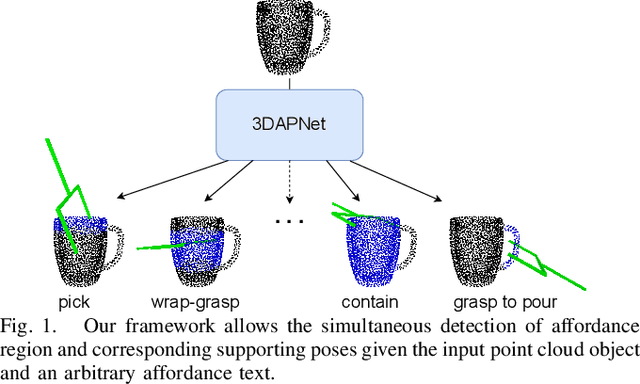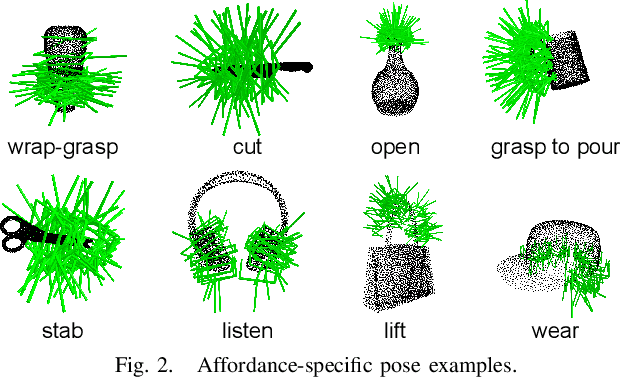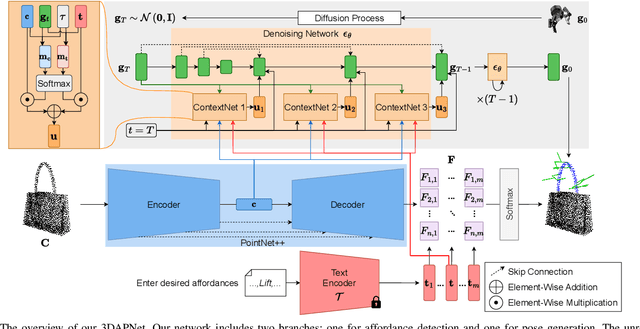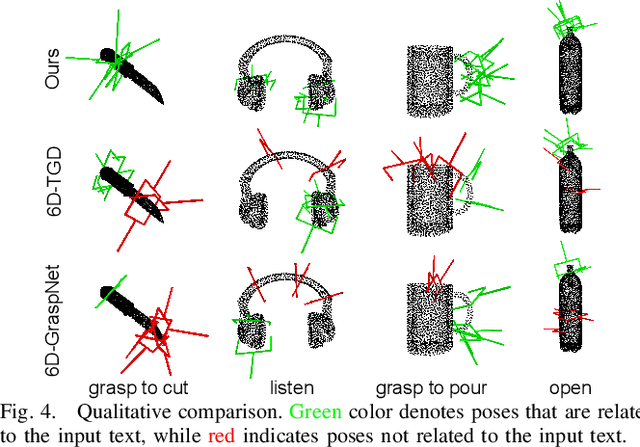Tuan Van Vo
ReFineVLA: Reasoning-Aware Teacher-Guided Transfer Fine-Tuning
May 25, 2025Abstract:Vision-Language-Action (VLA) models have gained much attention from the research community thanks to their strength in translating multimodal observations with linguistic instructions into robotic actions. Despite their recent advancements, VLAs often overlook the explicit reasoning and only learn the functional input-action mappings, omitting these crucial logical steps for interpretability and generalization for complex, long-horizon manipulation tasks. In this work, we propose \textit{ReFineVLA}, a multimodal reasoning-aware framework that fine-tunes VLAs with teacher-guided reasons. We first augment robotic datasets with reasoning rationales generated by an expert teacher model, guiding VLA models to learn to reason about their actions. Then, we use \textit{ReFineVLA} to fine-tune pre-trained VLAs with the reasoning-enriched datasets, while maintaining their inherent generalization abilities and boosting reasoning capabilities. In addition, we conduct an attention map visualization to analyze the alignment among visual attention, linguistic prompts, and to-be-executed actions of \textit{ReFineVLA}, showcasing its ability to focus on relevant tasks and actions. Through the latter step, we explore that \textit{ReFineVLA}-trained models exhibit a meaningful attention shift towards relevant objects, highlighting the enhanced multimodal understanding and improved generalization. Evaluated across manipulation tasks, \textit{ReFineVLA} outperforms the state-of-the-art baselines. Specifically, it achieves an average increase of $5.0\%$ success rate on SimplerEnv WidowX Robot tasks, improves by an average of $8.6\%$ in variant aggregation settings, and by $1.7\%$ in visual matching settings for SimplerEnv Google Robot tasks. The source code will be publicly available.
Vision Transformer Neural Architecture Search for Out-of-Distribution Generalization: Benchmark and Insights
Jan 07, 2025Abstract:While ViTs have achieved across machine learning tasks, deploying them in real-world scenarios faces a critical challenge: generalizing under OoD shifts. A crucial research gap exists in understanding how to design ViT architectures, both manually and automatically, for better OoD generalization. To this end, we introduce OoD-ViT-NAS, the first systematic benchmark for ViTs NAS focused on OoD generalization. This benchmark includes 3000 ViT architectures of varying computational budgets evaluated on 8 common OoD datasets. Using this benchmark, we analyze factors contributing to OoD generalization. Our findings reveal key insights. First, ViT architecture designs significantly affect OoD generalization. Second, ID accuracy is often a poor indicator of OoD accuracy, highlighting the risk of optimizing ViT architectures solely for ID performance. Third, we perform the first study of NAS for ViTs OoD robustness, analyzing 9 Training-free NAS methods. We find that existing Training-free NAS methods are largely ineffective in predicting OoD accuracy despite excelling at ID accuracy. Simple proxies like Param or Flop surprisingly outperform complex Training-free NAS methods in predicting OoD accuracy. Finally, we study how ViT architectural attributes impact OoD generalization and discover that increasing embedding dimensions generally enhances performance. Our benchmark shows that ViT architectures exhibit a wide range of OoD accuracy, with up to 11.85% improvement for some OoD shifts. This underscores the importance of studying ViT architecture design for OoD. We believe OoD-ViT-NAS can catalyze further research into how ViT designs influence OoD generalization.
* Accepted in NeurIPS 2024
Language-driven Grasp Detection with Mask-guided Attention
Jul 29, 2024



Abstract:Grasp detection is an essential task in robotics with various industrial applications. However, traditional methods often struggle with occlusions and do not utilize language for grasping. Incorporating natural language into grasp detection remains a challenging task and largely unexplored. To address this gap, we propose a new method for language-driven grasp detection with mask-guided attention by utilizing the transformer attention mechanism with semantic segmentation features. Our approach integrates visual data, segmentation mask features, and natural language instructions, significantly improving grasp detection accuracy. Our work introduces a new framework for language-driven grasp detection, paving the way for language-driven robotic applications. Intensive experiments show that our method outperforms other recent baselines by a clear margin, with a 10.0% success score improvement. We further validate our method in real-world robotic experiments, confirming the effectiveness of our approach.
Open-Vocabulary Affordance Detection using Knowledge Distillation and Text-Point Correlation
Sep 19, 2023Abstract:Affordance detection presents intricate challenges and has a wide range of robotic applications. Previous works have faced limitations such as the complexities of 3D object shapes, the wide range of potential affordances on real-world objects, and the lack of open-vocabulary support for affordance understanding. In this paper, we introduce a new open-vocabulary affordance detection method in 3D point clouds, leveraging knowledge distillation and text-point correlation. Our approach employs pre-trained 3D models through knowledge distillation to enhance feature extraction and semantic understanding in 3D point clouds. We further introduce a new text-point correlation method to learn the semantic links between point cloud features and open-vocabulary labels. The intensive experiments show that our approach outperforms previous works and adapts to new affordance labels and unseen objects. Notably, our method achieves the improvement of 7.96% mIOU score compared to the baselines. Furthermore, it offers real-time inference which is well-suitable for robotic manipulation applications.
Language-Conditioned Affordance-Pose Detection in 3D Point Clouds
Sep 19, 2023



Abstract:Affordance detection and pose estimation are of great importance in many robotic applications. Their combination helps the robot gain an enhanced manipulation capability, in which the generated pose can facilitate the corresponding affordance task. Previous methods for affodance-pose joint learning are limited to a predefined set of affordances, thus limiting the adaptability of robots in real-world environments. In this paper, we propose a new method for language-conditioned affordance-pose joint learning in 3D point clouds. Given a 3D point cloud object, our method detects the affordance region and generates appropriate 6-DoF poses for any unconstrained affordance label. Our method consists of an open-vocabulary affordance detection branch and a language-guided diffusion model that generates 6-DoF poses based on the affordance text. We also introduce a new high-quality dataset for the task of language-driven affordance-pose joint learning. Intensive experimental results demonstrate that our proposed method works effectively on a wide range of open-vocabulary affordances and outperforms other baselines by a large margin. In addition, we illustrate the usefulness of our method in real-world robotic applications. Our code and dataset are publicly available at https://3DAPNet.github.io
 Add to Chrome
Add to Chrome Add to Firefox
Add to Firefox Add to Edge
Add to Edge